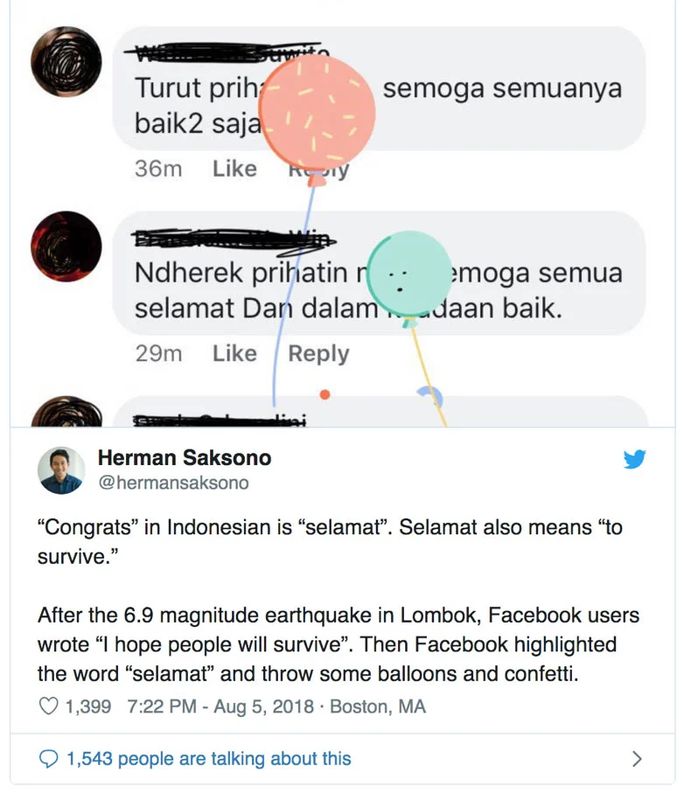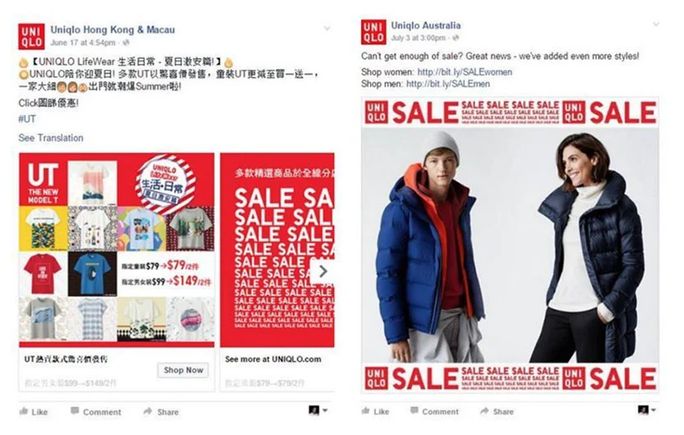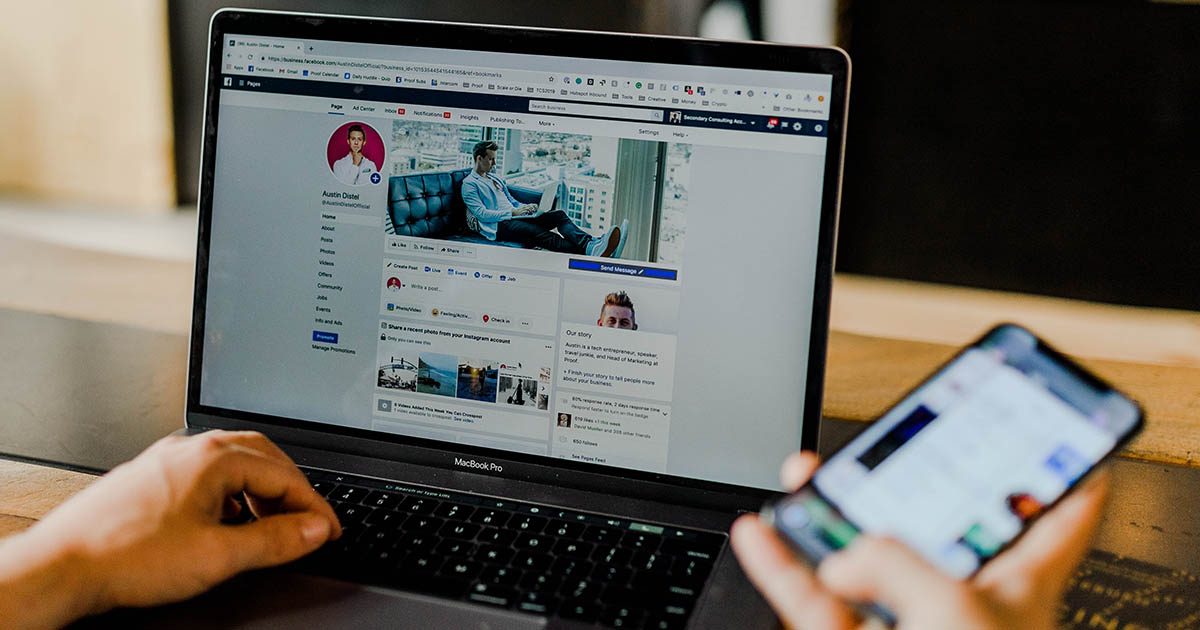Facebook continues to dominate the social media world, giving you an unprecedented reach to a global customer base.
Consider that of the nearly 3 billion active Facebook users, only 10% are American. More than half of Facebook’s users speak a language other than English.
Facebook’s growing presence in foreign markets open opportunities for international operations, which your business should fully embrace.
In particular, as internet connectivity expands on a global scale, your business should be prepared to use Facebook as a platform to engage international audiences.
Though Facebook presents businesses with enormous opportunity, it comes with a significant challenge. Make use of a Facebook audience insights tool to help you figure out your target audience.
Gaps in language and culture, for example, can act as strong deterrents for foreign users.
To be effective, your brand must research, determine, and fully invest in understanding their target global audiences.
In addition, you need to customize your Facebook content to target these users effectively, making sure to avoid any cultural blunders or second-language mishaps that can dilute engagement and your brand image.
Keep reading to learn how to effectively schedule and manage your Facebook accounts to effectively transcend culture gaps and engage global audiences.
1. Study Audience Behavior
The first step of international Facebook marketing is determining the international audiences that you want to target.
The best way to approach this objective is through diligent and critical research, which includes, of course, how they engage with Facebook.
Use Facebook Ads Manager to estimate the size and understand details about a particular audience. This includes the volume and behavior of users according to:
- Region
- Sub-region (states and provinces)
- Free-trade area
- Features (emerging markets or regions with iPhone app store availability)
Through this sort of research, for example, you’ll find facts such as the South-East Asia region is the fastest growing region for Facebook.
In addition, the vast majority of Facebook engagement in the APAC region (93%) occurs on mobile devices.
Given this data, you can know that mobile-friendly content that speaks most directly to male users earns optimal engagement in this region.
Once you identify an audience that you think fits the bill for a target audience, research and analyze broader cultural and economic information that group.
It’s very important to learn about the lifestyle and behaviors of target users before you attempt to engage them in any meaningful way.
Social listening tools are a good resource to help you understand topics of current cultural relevance based on terms and phrases they regularly use Facebook to research. Be sure to pay attention to:
- Conversation topics: What subjects are people most keen to talk about or engage with on Facebook? Do people seem to follow or track business topics?
- Hashtag and emoji use: These differ widely by culture and demographic – consider the difference in usage simply between generations.
- Cultural nuances: Are there phrases that mean something different in a certain nation or culture? In addition, does an audience use Facebook primarily for checking in with peers, planning events, sharing photographs, or political organization? You’ll need to understand these nuances to effectively connect with this audience through
- Tone and word choice: Do people typically use Facebook to expressing lament or excitement? Do you notice any topics that people seem eager to avoid? This is crucial for understanding how people in countries or cultures subject to strict government oversight or regulation operate on the platform.
- Time of posting: What topics do people post about at what times of the day? Not everyone in the world operates on a 5-day, morning-to-afternoon schedule – review work and leisure habits to understand when they would be most likely to check their Facebook.
Say, for example, you’re targeting millennial B2B users in Japan.
Many Japanese employees work 80-hour weeks, and they also observe the tradition of going out with colleagues after work.
Hence, it might be better to engage a young, Japanese B2B professional at 7 pm rather than 5 pm, then again at 11 pm after the evening social is over.
Compile all cultural and statistical data into audience personas. These insights will guide your Facebook content strategy and make sure that your Facebook posts are relevant rather than alien.
The most important thing to remember is to not assume your international audiences Facebook usage mirrors your own.
Each country and culture operates on different social norms which usually translate to social media. Understanding those norms informs how you can effectively engage with a particular group.
For a more holistic plan that covers both global and local tactics, here’s a complete Facebook marketing strategy to guide your campaigns from setup to scaling.
2. Focus on Simple Language
Use clear language to mitigate the risk that your message gets lost in translation.
Facebook offers a translate feature, but it’s best to hedge your bets by writing as clearly as possible.
Even a minor translation error – whether with conventions, grammar, or vocabulary – can undermine the credibility and engagement of your Facebook posts.
For example, when a 6.9 earthquake hit Indonesia in 2018, Facebook mistranslated the synonym for “survival” as “celebrate.” As a result, their automated messaging system prompted balloons and confetti to appear in conversations between people checking in on other’s safety.

You can also rely on basic sentence structure and vocabulary to ensure your translations avoid embarrassing and costly mistakes.
With simple language, you can be confident that your content gets the desired effect, rather than create a public relations nightmare or demonstrate your unfamiliarity with a country’s users.
Other tips for writing to prevent translation errors:
- Be direct about what you’re selling or promoting: This is actually a best practice for speaking to people who speak your own language – you want your audience to clearly understand the message of your content. You can be creative, but make sure you get right to the point.
- Avoid idioms: Idioms are developed through years of natural language adaptations. As a foreign brand, you should err on the side of caution and respect their organic use.
- Write at a third-grade level: Don’t try to impress – it’s almost certain you can describe the topics or products you use social media to promote on a basic level. Write at a third-grade level: Don’t try to impress – it’s almost certain you can describe the topics or products you use social media to promote on a basic level.
Facebook’s translator is ultimately a great reference tool for creating social content that translates across borders.
To ensure that your Facebook content and messaging will truly translate, you need to do your due diligence and double check with other sources before you proceed with a post or campaign.
Using simple, concise, and direct language and content, you can further avoid translation mishaps and ensure that you communicate your message clearly to your international Facebook audiences.
3. Localize Your Content
Localizing your content allows you to improve user experience on Facebook.
Users are more likely to engage with content that’s focused on their unique needs and doesn’t appear as generic brand messaging.
One common way brands localize their Facebook is through creating accounts dedicated to audiences in a particular nation, region, or culture.
For example, the retailer Uniqlo uses separate Facebook accounts to reach its audiences in Australia and Hong Kong.

Creating multiple Facebook accounts lets the company effectively advertise its products using custom language and content – both of which are designed for an optimal user experience for whatever audience encounters it, especially when compared to a person in either of these two countries being exposed to the same messaging.
With a localized page, you can also appeal to feel more comfortable targeting audiences using emotionally engaging content, which is typically more effective at generating goodwill and engagement.
Critically, localized content also mitigates the risk of offending your global audience.
Certain colors, symbols, and phrases are interpreted differently in different cultures. As a result, attempts at global messaging can backfire.
For example, Pepsi made a blunder in the 1960s when it encouraged shoppers around the world to: “Come alive with the Pepsi generation.” In Chinese, this translated to “Pepsi will bring your ancestors back from the dead.”

Research the cultural significance of certain symbols, colors, and key phrases in your messaging to make sure they fit in the context of your target region.
Another localization solution global brands should consider is hiring local resources to organize and manage your social media strategy.
While this is generally more expensive than relying on Facebook’s translator, it drastically improves how well you can engage with local audiences.
Customers crave authentic experiences, and some elements of an authentic local engagement campaign can only be achieved through relying on local resources. That’s why it’s essential to tailor your product messaging to global Facebook audiences to ensure resonance across regions.
Make sure to review social media marketing services in the regions you target to explore opportunities for local resources to effectively localize your company’s Facebook content.
4. Schedule Facebook Posts
Some mistakes brand made (like the ones mentioned above) while target global audiences were a result of not crafting well thought out content.
You can avoid that mistake with the help of Facebook marketing tools. Functionality of these tools ranges from curating content, to publishing it and later analyzing its performance.
Scheduling Facebook posts gives you the time and space to carefully craft every post. This also allows you to follow Facebook best practices for cross-border success, ensuring every update aligns with local preferences and engagement patterns.
You can ensure that you’ve followed all best practices for targeting global audiences, thus leaving no room for embarrassing mistakes.
Moreover, it also helps you customize your Facebook posts to suit the interests of your Facebook audience.
Optimize Your Facebook Strategy for Global Audiences
Businesses can succeed with Facebook on a global scale by attending to linguistic and cultural subtleties. Research is key, as is careful attention to the translation, both of words and imagery.
To effectively target your global audiences, consider using social listening tools and some Facebook tools to grasp relevant topics, create multiple Facebook accounts to avoid generic or potentially embarrassing content, and offer localized content that resonates with your audience.




